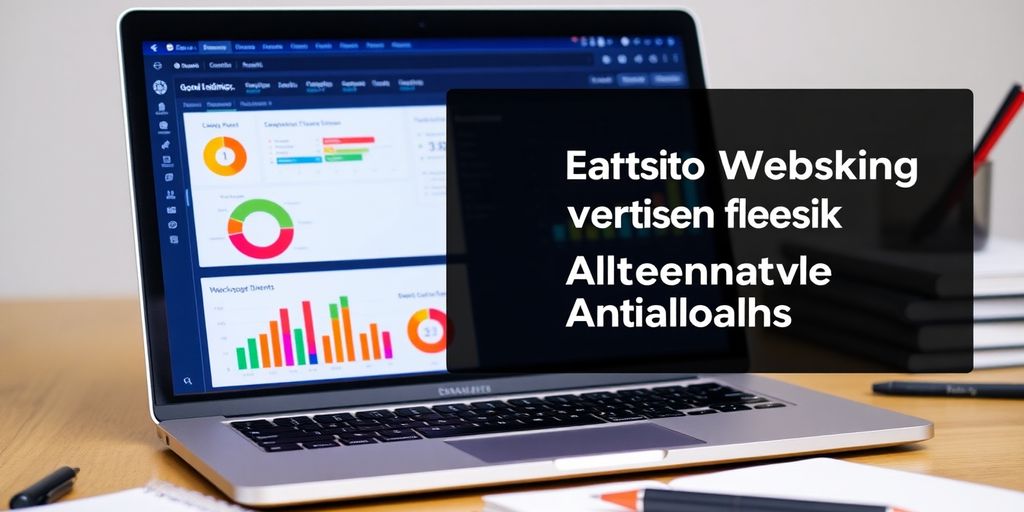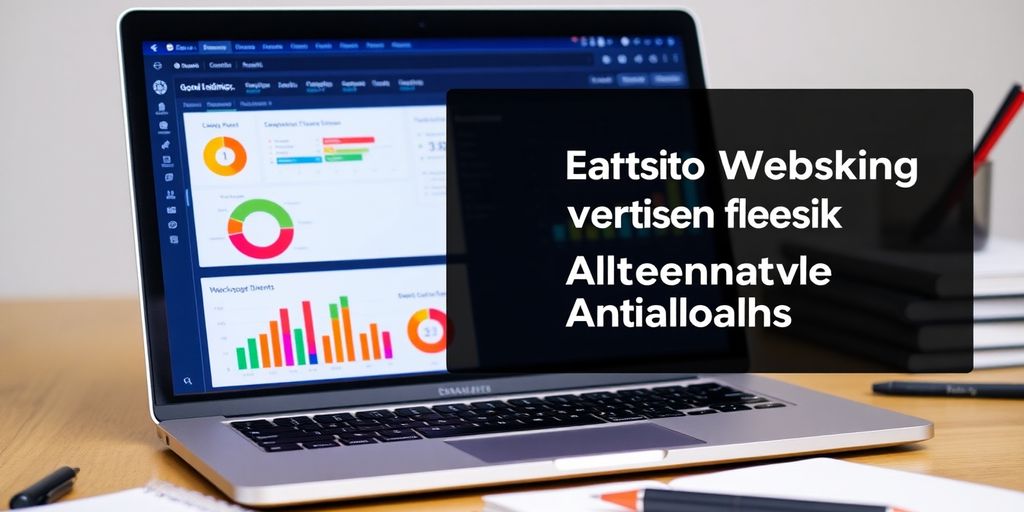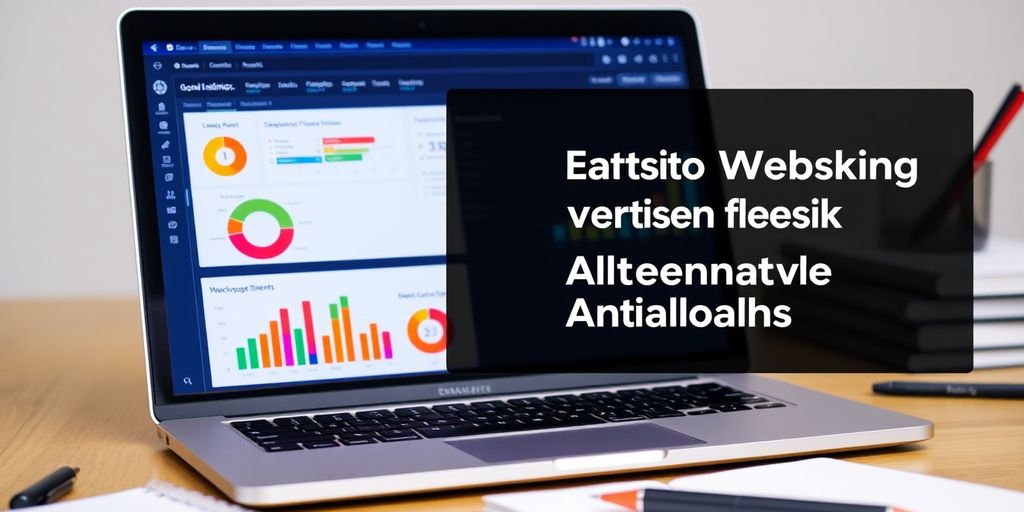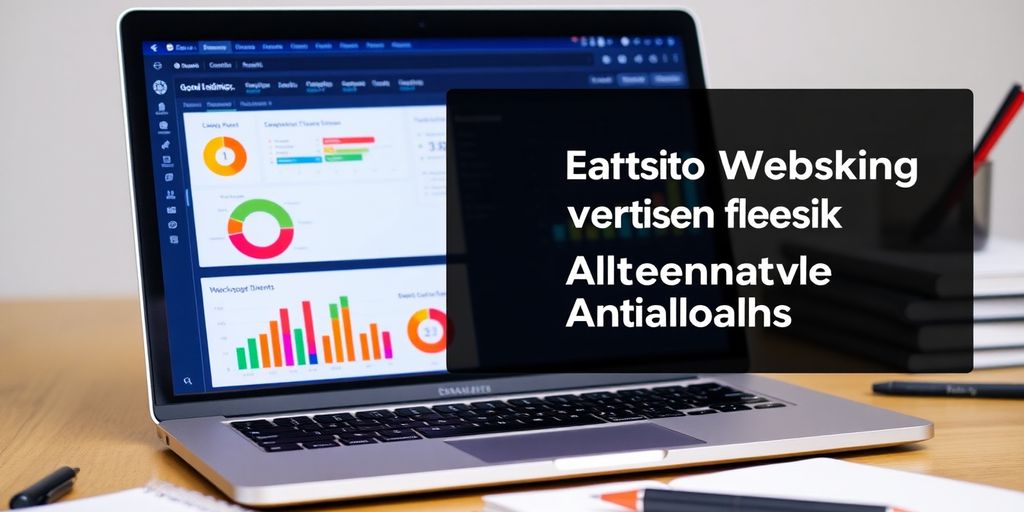Cookiebot CMP: Your Website’s New Best Friend for Compliance

Keeping your website compliant with cookie regulations can feel like a constant battle. Laws change, third-party trackers pop up unexpectedly, and managing it all across multiple sites can be a real headache. But what if there was a way to automate much of this work, giving you peace of mind and building trust with your visitors? That’s where a good Consent Management Platform (CMP) comes in. We’ll explore how tools like Cookiebot CMP can become your website’s new best friend for staying on the right side of privacy laws.
Key Takeaways
-
Cookie compliance isn’t just about avoiding fines; it’s about building trust by being transparent with website visitors about how their data is used.
-
Manual cookie audits are unsustainable, especially for businesses with multiple websites, as trackers and cookies change frequently.
-
Automated solutions like the best cookiebot CMP software continuously scan for cookies and trackers, detecting issues in real-time before users give consent.
-
Effective CMPs offer features like automated cookie blocking, region-specific consent prompts, and detailed consent logs to simplify compliance.
-
Integrating a CMP with tools like Google Tag Manager and ensuring compatibility with your website’s tech stack are important technical considerations for smooth operation.
Understanding Cookie Compliance and Your Website
Let’s talk about cookies. Not the chocolate chip kind, but the digital ones that follow you around the internet. If you own a website, you’ve probably heard about cookie compliance, and maybe it sounds like a headache. It kind of is, especially if you’re trying to manage it all by hand. Basically, laws like GDPR mean you can’t just track everyone who visits your site without them knowing and agreeing. This isn’t just a suggestion; it’s a legal requirement, and ignoring it can lead to some hefty fines.
The Necessity of Cookie Notifications and Statements
Think of a cookie notification as your website’s polite introduction. It’s the first step in letting visitors know you use cookies and what for. This notice should clearly explain that cookies are being used and give people a choice. Following that, a cookie statement acts like a detailed report. It lists every single cookie your site uses, what its purpose is, who provides it, and how long it lasts. This transparency is key. Without these, you’re essentially operating in the dark, and that’s a big no-no for regulators.
Why Consent is Crucial for Future Data Practices
Getting consent isn’t just about ticking a box for today; it’s about building a foundation for how you handle data moving forward. As technology changes, like with the move away from third-party cookies, getting explicit permission from users will only become more important. Whether it’s for analytics, marketing, or other tracking, you need a clear
Automating Your Path to Compliance
Keeping up with cookie laws across all your websites can feel like a never-ending task. You might have a handle on your main site, but what about all the others? Microsites, regional pages, or sites managed by different teams can easily fall through the cracks. This is where automation steps in, turning a headache into a manageable process.
Why Manual Cookie Audits Are No Longer Sustainable
Let’s be honest, manually checking every single website for cookie compliance is a huge time sink. Imagine having to go through each page, checking every script, and documenting it all. If you manage even a handful of sites, this quickly becomes impossible. For larger organizations with hundreds of domains, it’s simply not feasible. The sheer volume of work, combined with the constant updates to tracking technologies and regulations, makes manual audits a recipe for missed violations and potential fines. It’s like trying to count grains of sand on a beach – you’ll never finish, and you’re bound to miss some.
Continuous Scanning for Cookie and Tracker Behavior
Instead of periodic, manual checks, an automated system continuously scans your digital assets. Think of it as a vigilant security guard for your websites, always on duty. This means it’s constantly looking for:
-
Any new cookies or trackers that appear.
-
Changes in how existing trackers behave.
-
Whether your consent management platform (CMP) is functioning correctly.
-
If any third-party scripts are firing without proper consent.
This ongoing monitoring helps you stay ahead of issues before they become major problems. It’s about moving from a reactive stance, where you fix problems after they’re found, to a proactive one, where you prevent them from happening in the first place.
Real-Time Detection of Pre-Consent Cookie Drops
One of the biggest compliance risks is when cookies or trackers load before a user has given their consent. This is a direct violation of many privacy laws, and regulators are paying close attention. An automated solution can detect these ‘pre-consent drops’ the moment they happen. This is critical because:
-
It prevents potential fines from regulatory bodies.
-
It protects your brand reputation by showing users you respect their privacy from the start.
-
It ensures that your consent banner is actually doing its job, not just a decorative element.
Relying on manual checks means you might only discover these violations weeks or months later, long after the damage is done. Automated systems catch them instantly, giving you the chance to fix them immediately and avoid penalties. This real-time detection is a game-changer for maintaining compliance across a complex web of digital properties.
Cookiebot CMP: Streamlining Multi-Site Management
Auto-Discovery of All Your Digital Assets
Managing a bunch of websites can feel like juggling chainsaws, especially when it comes to privacy rules. You might have a main site, a few regional ones, maybe a blog or a landing page that you almost forgot about. Cookiebot CMP automatically finds all these digital properties for you. It scans your network to identify every domain and subdomain, so you don’t have to keep a manual list that’s probably out of date anyway. This means no more surprises from that old microsite you thought was offline – it gets scanned and managed just like the rest.
Per-Page Scanning for Granular Compliance
It’s not enough to just scan your whole website. Sometimes, a single page can cause problems. Maybe a specific product page has an embedded video that drops cookies before consent, or a marketing campaign page uses a tracker that isn’t configured correctly. Cookiebot CMP goes deep, scanning each page individually. This detailed approach helps catch issues that a simple domain-level scan might miss. It’s like having a magnifying glass for your website’s privacy practices, ensuring that every corner is compliant.
Centralized Dashboard for Monitoring and Reporting
Trying to keep track of compliance across multiple sites using spreadsheets is a recipe for disaster. Cookiebot CMP brings everything together into one easy-to-use dashboard. From here, you can see the compliance status of all your websites at a glance. You can monitor cookie and tracker behavior, check for any consent violations, and generate reports. This central hub makes it simple to manage your entire digital footprint, identify areas needing attention, and prove your compliance efforts to regulators or internal teams. It really cuts down on the manual work and makes managing a large online presence much more manageable.
Keeping track of cookies and trackers is a constant battle. They change frequently, and new ones pop up all the time. Having a system that automatically finds and scans everything, page by page, and then shows you the status all in one place is a game-changer for anyone managing more than one website.
Key Features of The Best Cookiebot CMP Software
When you’re looking for a tool to handle cookie compliance, it’s easy to get lost in all the technical talk. But really, the best solutions boil down to a few core things that make your life easier and keep you on the right side of the law. Cookiebot CMP really shines here with features that are both powerful and straightforward.
Automated Cookie Blocking for GDPR Compliance
This is a big one. You can’t just ask for consent after cookies have already started tracking you – that’s a big no-no under rules like GDPR. Cookiebot automatically blocks all cookies and trackers until a user actually gives their okay. This means your website is compliant right from the first click, not after you’ve already collected data you shouldn’t have. It’s like having a digital bouncer at your website’s door, checking everyone’s ID before letting them in.
Dynamic, Region-Specific Consent Prompts
Privacy laws aren’t the same everywhere, right? What’s okay in California might not fly in Europe. Cookiebot understands this. It automatically figures out where your visitor is coming from and shows them the consent banner that matches their local privacy rules. This saves you a ton of headaches trying to manage different banners for different places. It just works, adapting to each user’s location.
Comprehensive Cookie Statement and Consent Logs
Transparency is key to building trust. Cookiebot helps you create a detailed cookie statement that lists exactly what cookies your site uses, why, and who provides them. But it doesn’t stop there. It also keeps a detailed log of every consent given, refused, or withdrawn. This is super important for audits and proving you’re doing things by the book. It’s like having a perfectly organized filing cabinet for all your privacy-related paperwork.
Here’s a quick look at what makes these features so useful:
-
Automatic Blocking: Prevents non-essential cookies from loading before consent is given.
-
Geo-Targeting: Displays the correct consent banner based on user location.
-
Detailed Records: Maintains an audit trail of all user consent decisions.
-
Clear Information: Provides users with easy-to-understand details about cookie usage.
Keeping track of all the cookies and trackers on your site can feel like a full-time job. Having a system that automatically handles blocking and logging means you can focus on running your business instead of worrying about compliance details.
Seamless Integration and Technical Considerations

Integrating with Google Tag Manager and Other Tools
Getting Cookiebot CMP to play nice with your existing setup is usually pretty straightforward. If you’re already using Google Tag Manager (GTM), for instance, Cookiebot can slot right in. This means you don’t have to manually add every single tracking script. Cookiebot can manage the consent for those tags, making sure nothing fires before a user says it’s okay. It’s like having a gatekeeper for all your website’s data collectors.
This integration is key because it stops those pesky pre-consent cookie drops. You know, when a cookie sneaks onto a user’s browser before they’ve even agreed to anything? That’s a big no-no for most privacy laws. By linking Cookiebot with GTM, you get a much cleaner process.
Compatibility with Your Website’s Technology Stack
So, what if you’re not using GTM? Or maybe you’ve got a custom-built site? Don’t sweat it. Cookiebot is designed to work with a whole bunch of different website technologies. Think WordPress, Shopify, custom HTML, you name it. The main thing is that it needs to be able to inject a script into your site’s header or footer. Most platforms make this easy.
It’s worth checking the specifics for your particular setup, though. Some older or more niche systems might need a little extra attention. But generally, Cookiebot is pretty flexible. The goal is to make sure the CMP works with your site, not against it.
Scalability for High Traffic Volumes
What happens when your website suddenly gets super popular? Like, a viral post or a big marketing campaign kind of popular? You need a system that can handle the rush without slowing down. Cookiebot is built to scale. It’s a cloud-based service, which means it can handle a lot of traffic without breaking a sweat. This is important because you don’t want your consent banner to be the reason your site crashes during peak times. A slow or unresponsive banner is just as bad as no banner at all when it comes to compliance and user experience.
When choosing a CMP, think about your future growth. A solution that works for a small blog might not cut it for a large e-commerce site. Look for systems that are designed for high performance and can grow with your business. This avoids the headache of switching later.
Here’s a quick look at what to consider:
-
Script Size: How much code does the CMP add? Smaller is generally better for site speed.
-
Server Location: Where are the CMP’s servers located? Closer to your users usually means faster loading.
-
Third-Party Dependencies: Does the CMP rely on other services that could go down?
-
Caching: How does the CMP handle caching to ensure it loads quickly on repeat visits?
Building Trust Through Transparent Data Practices

It’s not just about avoiding fines anymore. How you handle user data really matters for your brand’s reputation. People are more aware of their privacy rights than ever before, and they expect companies to be upfront about what information they collect and why. When you’re open about your data practices, you show respect for your visitors. This can lead to people sticking around longer and feeling better about your brand.
How CMPs Enhance User Control Over Data
A good Consent Management Platform (CMP) puts the user in the driver’s seat. It’s about giving them clear choices, not just a wall of legal text. Think about it:
-
Easy-to-understand banners: No confusing jargon, just plain language about what cookies are being used and why.
-
Simple preference management: Users should be able to change their minds easily, anytime they want.
-
Clear feedback: When they adjust their settings, they should see the impact immediately.
This level of control makes people feel more comfortable sharing their information, if they choose to.
The Role of CMPs in Fostering User Loyalty
When users feel their privacy is respected, they’re more likely to trust your brand. This trust is a big deal. It means they’re more likely to return to your site, make purchases, and even recommend you to others. It’s a win-win: they get a better experience, and you build a more loyal customer base.
Building trust through transparency isn’t just a nice-to-have; it’s becoming a requirement for long-term business success in the digital age. Users are actively seeking out brands that prioritize their privacy.
Improving Website Performance with Privacy Compliance
While it might seem like privacy compliance is just about rules and regulations, it can actually help your website perform better. By understanding which cookies are active and why, you can often streamline your site. Removing unnecessary trackers can speed up page load times. Plus, when users feel secure, they tend to interact more with your content. It’s about making your website not only compliant but also a more pleasant and efficient place for visitors.
Here’s a quick look at how transparency can impact user behavior:
|
Action |
Before Transparency |
After Transparency |
|---|---|---|
|
Bounce Rate |
Higher |
Lower |
|
Time on Site |
Shorter |
Longer |
|
Conversion Rate |
Lower |
Higher |
|
User Trust Score |
Low |
High |
Wrapping Things Up
So, there you have it. Keeping your website compliant with all the cookie rules out there can feel like a puzzle, especially with how often things change. But tools like Cookiebot are designed to take a lot of that headache away. It’s not just about avoiding fines, though that’s a big part of it. It’s also about being upfront with your visitors and building that trust. By automating the process of managing cookies and consent, you can spend less time worrying about regulations and more time focusing on what you do best – running your business. Give it a try; you might be surprised at how much simpler things become.
Frequently Asked Questions
What exactly are cookies and why do websites need them?
Think of cookies like little notes a website leaves on your computer. They help the site remember things about you, like what’s in your shopping cart or your login details. Websites use them to work better and give you a more personalized experience. However, some cookies track what you do online, which is why rules about them exist.
What does ‘cookie compliance’ mean for my website?
Cookie compliance means following the rules about how websites can use cookies. Laws like GDPR say you need to tell people about the cookies you use and get their permission before using most of them. It’s all about being honest and giving people control over their information.
Why is getting user permission (consent) so important?
Getting consent is super important because it respects people’s privacy. It’s like asking before you borrow something. When users agree to cookies, they know what they’re signing up for, and it builds trust. Plus, breaking these rules can lead to big fines.
What’s a Consent Management Platform (CMP) and why would I need one?
A CMP is like a helpful assistant for your website that manages cookie permissions. It shows visitors a banner asking for their consent and keeps track of who agreed to what. This makes it way easier to follow privacy laws and avoid mistakes, especially if you have a lot of websites.
How does Cookiebot CMP help manage multiple websites?
Cookiebot is great if you have many websites. It can automatically find all your digital properties, check each page for privacy issues, and give you one central place to see how everything is doing. This saves a ton of time and effort compared to checking each site one by one.
Can Cookiebot CMP block cookies automatically?
Yes, absolutely! Cookiebot can automatically block most cookies until a user gives their permission. It only allows the essential cookies needed for the website to function. This is a key feature for making sure your site is compliant right from the start.








Responses